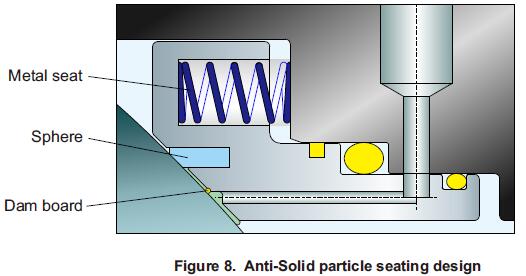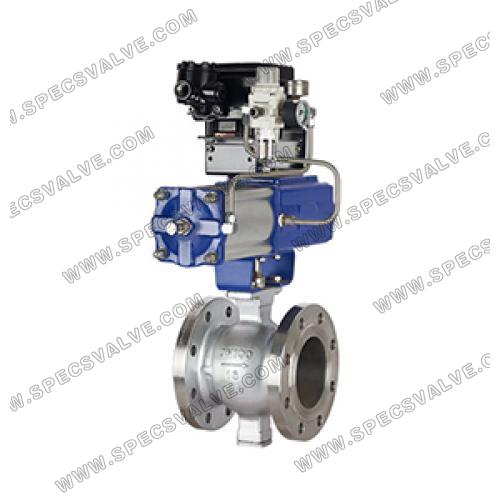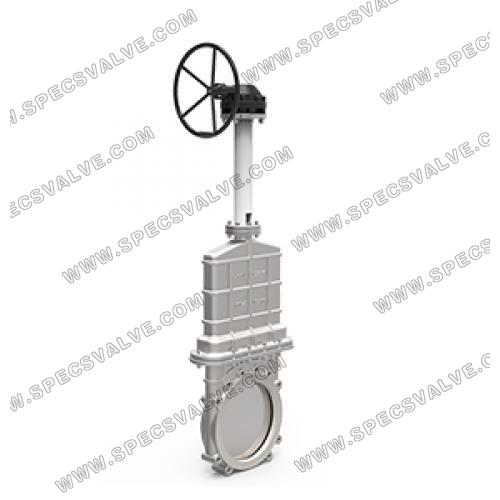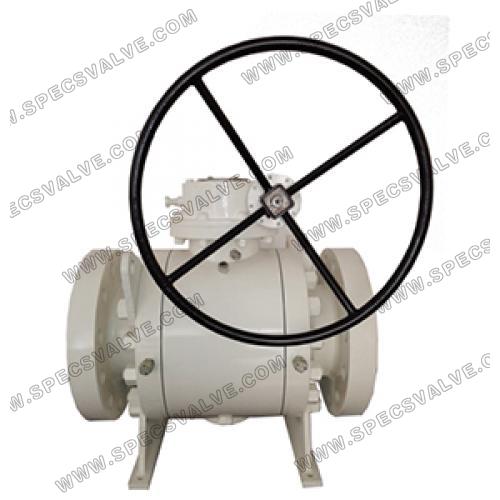Description
Technical Specifications
SPECS fully welded trunnion mounted ball valves are designed according to API6D standard,transition & pup pieces could to match line grade if needed, available with stem extension for buried installation. The valves can be applied in wide temperature ranges ( -46~200℃), particularly for pipeline flow with large size and high pressure. The series are subjected to the fire safe tests and certified per API607 and API6FA.
Applicable Standard
Design & Manufacture Standard: API6D, ASME16.34, BS5351
Face to Face: ASME B16.10, API6D
End Connection: ASME B16.5, EN1092-1, GOST33259, ASME B16.25
Test Standard: API6D, API598
Products Range
Size: 2"~48"
Pressure Rating: ASME CLASS 150~2500
Material: Carbon steel, Stainless steel, Alloy steel, Duplex stainless steel
End: BW
Operation: Operation: Manual, Gear, Pneumatic, Electric
Design Features
Anti Blow-out Stem
Since the main structure of Ball Valve is that the ball separated from the stem, if there is no reliable stem anti-blow design, the stem is easy to be blown out. Such a reliable stem blowout proof design is important. All - welded Ball Valves manufactured by SPECS is totally reliable stem anti - blow design. One end of the valve stem close to the ball is designed as a whole T-shaped structure, the four-ring pressing the T-shaped structure of the valve stem, and the four-ring embedded in the gland welded with the valve body, so that it is very reliable to avoid the failure of the top flange screw caused by the valve cavity pressure blown out of the serious .As shown in the figure 1
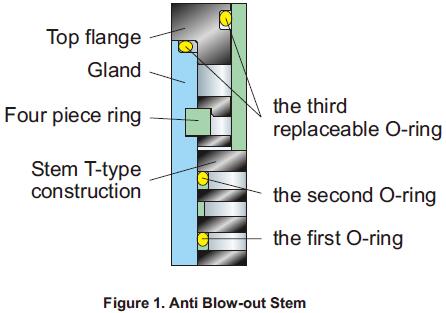
Super Fire Safe Design
Stem Fire Protection Design
Under normal circumstances, all - welded ball valves manufactured by SPECS, before fire, Leakage from the valve stem area is prevented by two O-ring seals and a gland packing. Leakage through the valve body connection is also blocked by an O-ring seal and a body gasket. After a fire deteriorated the O-rings, gland and body gasket, the fire safe stem packing prevents external leakage. See figure 2a.
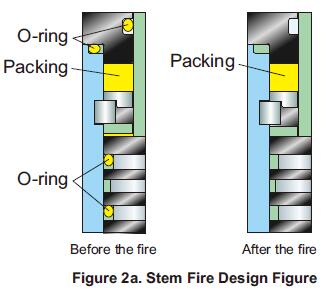
Seat Fire Protection Design
Under normal circumstances, all - welded ball valves manufactured by SPECS, before fire, the non-metal seat and circle-type play a sealing role to effectively prevent internal leakage of the valve. When a fire occurs, the non-metal seat and the circlet are invalidated by melting. At this time, under the action of the spring force, the metal seat and the ball form a metal to metal hard seal. The graphite ring expands under high temperature to form a seal. Metal to metal hard
seal and graphite expansion seal minimize internal leakage. See figure 2b for details.

Anti-static Device
Anti-static design is any easy or possible accumulation of static charge in the valve cavity parts and the valve body (the valve body is generally connected with the pipeline system grounding device) to form a conductor path, so that the valve switch or medium erosion caused by the friction of static charge effectively into the grounding device. Anti-static device is the standard design for ball valves manufactured by SPECS. All welded valves manufactured by only have the potential to accumulate charge in the sphere, so the electrostatic design is: the stem is equipped with a spring and a ground plug, so that the ball forms a conductor between the stem and the valve body, and the static charge can be transferred from the sphere to the grounding device through the stem and valve body, thus avoiding the accumulation of static charge. This accumulation of static can be extremely dangerous in some dangerous areas. See figure 3.
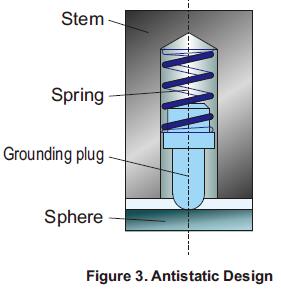
Grease Injection Design
If the valve leaks in the pipeline, the leakage of the valve can be reduced or eliminated by injecting a sealing grease (a sticky grease). When the valve has not been switched for a long time, resulting in greater torque, grease can be injected, which can effectively reduce the operating torque of the valve and enhance the operation friendliness. For all welded ball valves manufactured by SPECS, the default design with grease injection is above 6 and below 4. If customers need grease injection design, they can also design with grease injection.
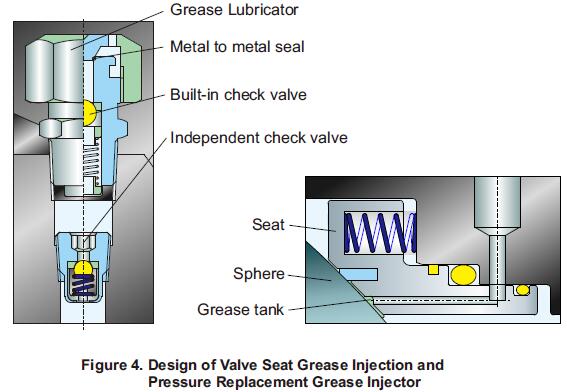
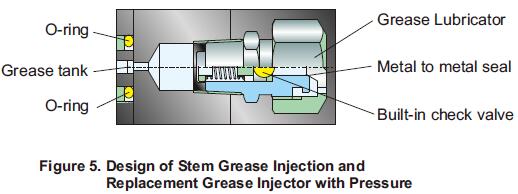
Zero Leakage (Three-way Stem Seal)
The most important thing of all welded ball valve is to control leakage. Because the body of the Fully Welded Ball Valve is welded, there will be no leakage. The only possible leakage is the sealing at the stem, so the sealing at the stem is the guarantee of zero leakage of the Fully Welded Ball Valve. The valve stem seal of all welded ball valve manufactured by SPECS adopts three seals, the first and second are O-ring seals, the third is replaceable O-ring seals, and the three seals are the guarantee of zero leakage. See Figure 6 for details.

Stem Limit Design
When replacing the actuator, it is necessary to find the full open and full closed positions to adjust the limit structure of the actuator. If the valve itself does not have the limit structure of the stem, it is difficult to find the full open and full closed positions of the valve online. Ball valves manufactured by Neway are equipped with stem limiting devices to facilitate replacement of actuators. See figure 7.
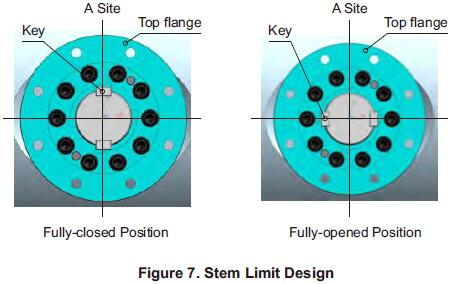
Solid Particle Proof Seat Design
In the process of pipeline construction, there are more or less fixed particles, such as sand, welding slag, etc., which remain in the pipeline. If these fixed particles do not have effective measures to reduce their destructiveness, their harm to the valve is considerable. These particles will damage the seating surface of the valve when the valve is on and off, causing internal leakage of the valve. SPECS's fully welded ball valves adopt three-way composite sealing technology. The first metal seat seal can effectively filter out large particles of impurities, the second plastic seal can filter out small particles of impurities, and the last rubber seal ring can achieve zero leakage of the valve. This composite sealing technology can minimize the leakage of the seal caused by impurities. (See Figure 8 for details)
